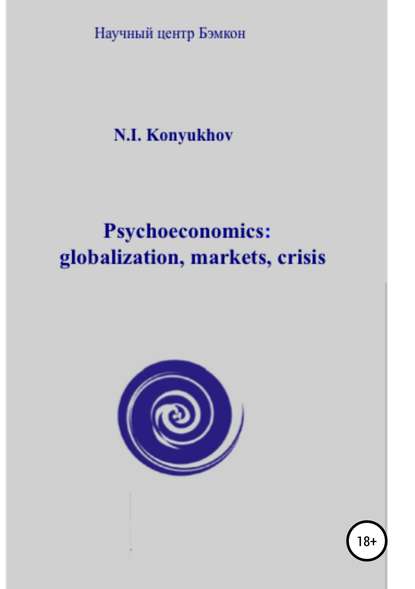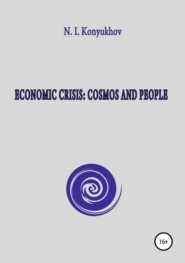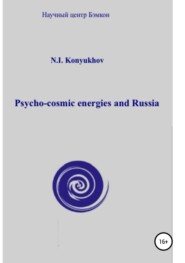По всем вопросам обращайтесь на: info@litportal.ru
(©) 2003-2024.
✖
Psychoeconomics: globalization, markets, crisis
Год написания книги
2018
Настройки чтения
Размер шрифта
Высота строк
Поля
– In a period of crisis and high unemployment, it is increasingly difficult for individuals to look forward to success in providing for their families. Businesses, especially small and medium-sized ones, are disappearing faster than they are being created. Unemployment has become chronic. And this means the quality of population and of workers will fall, and this quality is critical for creating a modern business “from scratch”.
– Given the high cost of a quality education, far from everyone will be able to acquire one.
These factors limit the ability of people from families with low incomes to compete against those with higher incomes, but they do not always temper their desire to elevate their status. Hence the discrepancy between social and sociopsychological structure becomes more and more pronounced.
Given the above, it is critical to understand the cyclical nature of the process by which the conflict between the social and sociopsychological structures of the society is exacerbated, and the remedy from this situation when there are no natural mechanisms for solving them. We even find examples of these measures in the pre-capitalism past of Europe. In the Middle Ages law formally limited the power of the strong and capable people without property, but in reality they could achieve whatever they wished. And they banded together for this cyclically. Today, law theoretically provides the opportunity to reach any heights in the socioeconomic structure of the society, but in actuality, this can be done by the very few, although millions wish to do so. And the cyclical nature of the growth of these wishes in the large mass of people is not annulled by contemporary mass media and other factors of the contemporary world order. Both in the Middle Ages and now, bringing the social and sociopsychological structures of the society into concordance by means of conflict-free means and measures was or became impossible. And the proneness to conflict is currently increasing. Because of globalization this is happening frequently in different countries with amazing synchronicity. For now this sociopsychological synchronicity is happening without the political unification of the “masses”. But this process will start very soon.
Therefore under globalization there will be synchronization of protests of the “masses” in those countries where economic crises have occurred, but this is a rather large group of countries. The world is integrated, everything is being synchronized. And we are witnesses of this process. These processes are related to the cyclical nature of the change in basic psychotypes of the population, the elite.
Confirmation of this idea is also possible through analyzing the results of IQ measurements in the representatives of different countries.
3.3 Synchronous and asynchronous alteration of the psycho-type of population of the world by the example of IQ alterations in the age of globalization
Each psycho-type has its own type of intelligence. It begins to be realized more and more in modern psychology. With this initial reference it is clear that with a change in psyche of people along with the changing cycles of solar activity the results of psycho-diagnosis will also vary by means of one and the same intelligence tests. This thesis fully supports the Flynn effect and the data on its refinement. The essence of the effect is in gradual increasing of the levels of intelligence quotient (IQ) of people in different countries within decades. The publication of data on this was in 1984 (The mean IQ of Americans: Massive gains 1932 to 1978 in the magazine “Psychological Bulletin”). The explanation of this fact with the genetic evolution of humanity that appears to be the “growing clever” is not tenable, since this effect affects the decades and not the change of generations.
The new tested ones with the time difference of 10 or more years since 1932 in the United States (these are the years when resonants came to power), showed higher scores on the old tests. According to Flynn, from 1934 to 1978 the IQ of the average person in the United States increased by 15 points, in other words it grew by 3 points per decade. We should not that in respect to the United States it was the time of the activity of the resonants and postresonants.
There are lots of facts on this matter. And they do not allow us to doubt in accuracy of the conclusions of Flynn, but at the same time they show the historical boundaries of this effect in developed countries.
So, in 2004 the Norwegian scientists (Jon Martin Sundet, et cetera.) from the University of Oslo published in the journal «Intelligence» the article about the evolution of the test results of the conscripts in the period from 1950 to 2002 in collaboration with colleagues from the psychological service of the Norwegian armed forces. According to them during the first two decades Flynn effect took place as even more pronounced than that recorded by Flynn himself. But according to these scientists it was found that the rate of increase in IQ 70-80 years began to slow down noticeably, and by the mid-90's the growth of IQ stopped at all. As for some individual figures, namely, the test results of arithmetic skills began slowly but steadily decline since that time.
The works of Tisdale and Owen conducted in 2005 and again in 2008 the showed that the results of IQ tests of the Danish conscripts grew from 1959 to 1979 by 3 points per decade, and from 1979 to 1989 they grew by only 2 points, from 1989 to 1998 by 1,5 points, but for the period from 1998 to 2004 they decreased by the same 1.5 points. http://ru.wikipedia.org/wiki/Эффект_Филинна
These are the fairly reliable results, as in Denmark there is the general military obligation. It means that the intelligence testing should be conducted almost among the entire male population of the country at the age of 18 years.
The given results are not the artifact. With the growth of the emotionality of people and emergence of the growing number of postpostresonants the intelligence changes with the main psycho-types of population. Resonants develop society, put long-range targets and innovate. There are more domain experts in this period. Most of the society also develops intelligence to solve logic problems at this moment.
Postresonants have more developed meta-program "general", they tend to repeat the things they have already done. Their development freezes repeating one and the same thing. Correspondingly, the development of the capacity to find the solution of problems provided in the tests of intellect (Eysenk test) is not so fast. The results of IQ test become stable.
In the emotional society the ability to solve the most types of mental tasks falls. If among those persons who are inclined more to communication than to the domain work in fact the domain intelligence develops less than that of domain experts-resonants, the capacity for creativity is preserved. This is due to the fact that the ability to communicate requires no less and sometimes even more creativity than the ability to the objective thinking. But here the hysteroid state of population leads to a decrease in signs of creativity. For example, since 1966, when the Torrance test for creative thinking was created, the results of testing the Americans who performed that test constantly grew, as well as of other intellectual tests that led to the revelation of the Flynn effect. Since the beginning of 90es the results of the Torrance test steadily decrease. For the researches of the specialists of William & Mary College about 300 000 people were chosen.
The worst dynamics was shown by children from kindergarten up to the sixth form. Namely in this age the dependence of psycho-type of children from the parents is the strongest. Those psycho-typological changes which occur in the world of the elite and the economically active population are copied by others, especially by children through the mechanisms of imitation (imitating the older, more successful, elite …), empathy and suggestion. The dynamics of these changes can be judged according to the schedule that reflects the change in IQ of Norwegian conscripts.
See : Jon Martin Sundet, Dag G. Barlaug Dagga. Barlaug, Tore M. Torjussen Institute of Psychology, University of Oslo, PO Box 1094, Blindern N-317 Oslo, Norway. Psychological Services, Norwegian Armed Forces, Norway
But does the population of all the countries have the same dynamic change of IQ? As we see in the United States, Norway, Denmark the trends are similar. And what about other countries? No. In different countries it happens in different ways. In countries where the psycho-types of the economically active population change the same way as in the United States, the results are the same. Thus, data on the United States and Norway are close. These findings are consistent with GDP growth rates in these countries on equal conditions. This statement is principle. This is not the moment of understanding randomness of such coincidences, but the moment of understanding the relationship of dynamics of the changes in psyche and corresponding intellectual abilities of people in different countries over years. This proof is made in this study on the basis of conclusions about the dynamics of change in psycho-eco-economically active population of the world with the help of the broadest and sufficiently accurate researches of psychologists.
Вы ознакомились с фрагментом книги.
Приобретайте полный текст книги у нашего партнера:
Приобретайте полный текст книги у нашего партнера:










